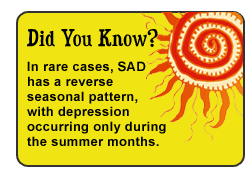Which Mood Disorder Is It?
October 20, 2015
What does “Mood” mean?
Everyone faces a period of feeling down, sadness, happiness or sometimes a big all of energy. That is just part of being a human and ordinary life but in this world, a small population of people have these disturbances that are not normal. These disruptions are called mood disorders. When many people think of mood, it is often referred to their feelings. For example, “I am in a happy mood, ” but health professionals look review mood differently. In a clinical setting, it is used as a persistent emotional state that affects how a person sees the world.
College students face many mental health issues that are left untreated and can often drain students and is important for students to take action now. Research by the National Alliance on Mental Illness on college campuses show:
1 in 4 students have a diagnosable illness
40% do not seek help
80% feel overwhelmed by their responsibilities
50% have been so anxious they struggled in school
Depression
Depression is the number one reason why students drop out of college. It is an easy getaway and if it is left untreated, it could lead to other symptoms and suicide. It is said that 36.4% of college students have experienced some level of depression in 2013. Depression is a common illness that interferes with life making it hard to eat, sleep, work and makes you feel helpless. Depressive illnesses are disorders of the brain and are likely caused by a combination of genetics, biological, psychological and environmental factors. Knowing how you handle feelings, stress, heartbreak, an isolation may help you realize when you are depressed.
Symptoms:
-Feelings of sadness or unhappiness
-Change in appetite or weight
-Slowed thinking or speech
-Loss in energy and sleeplessness
-Trouble concentrating
-Thoughts of suicide
Though you may see signs in yourself, you may have a friend whose behavior has been changing recently. Here are recognizable signs of depression of a friend:
-They are no longer engaged in activities they once loved
-They are experiencing extreme anger or sadness over a relationship in their life
-They are talking about death or suicide
-They no longer attend classes or social outings
Treatment:
-Psychotherapy (talking therapy) used to treat mild and moderate forms of depression
-Antidepressants prescribed by family doctor
-Electroconvulsive therapy: release of chemicals in the brain that aid communication between nerves
S.A.D. Syndrome (Seasonal Affective Disorder)

SAD syndrome is a mood disorder that is associated with depression and seasonal variances of light. It affects half a million of people in the winter season between the months of September to April. The symptoms soon calm down during the spring and summer months but still have different affects. Majority of in people deal with SAD syndrome from age 18 to 30. It is more typical for women to suffer from it; 3 out of 4 SAD sufferers are women. It also affects more or less to people depending on their geographical location.
Symptoms in winter months:
-Tiredness
-Low energy
-Weight gain, cravings for foods high in carbohydrates
-Oversleeping
Symptoms in summer months:
-Depression
-Trouble sleeping
-Weight loss
-Poor Appetite
-Anxiety
What causes SAD Syndrome?
As seasons change, different sunlight patterns cause a shift in the circadian rhythm and causes these biological clocks to become irregular with daily schedules. The hormone melatonin, a sleep-related hormone secreted in the brain, has been linked to depression because the mormons has increased levels in the dark. So when there is shorter days and longer nights, the secretion of melatonin increases.
Treatment:
For mild symptoms, spending time outdoors in the sunlight relaxing or doing work is helpful. For severe symptoms, bright light therapy or phototherapy decreases the secretion of melatonin in the brain. If light therapy does not work, it is possible to be prescribed to an antidepressant drug to reduce the symptoms.
Postpartum Depression
Often people may think having a baby is beautiful and brings joys to life. Though that is true for some, other women may face postpartum depression.. Postpartum Depression is a depression after a woman gives birth to her child. It can occur immediately after delivery or up to a year later but most of the time, it occurs within the first three months after delivery. This depression can look like the normal “baby blues” except that postpartum depression symptoms last longer and more severe.
Symptoms:
-Lack of interest in your baby
-Negative feelings towards your baby
-Worrying about hurting your baby
-Lack of concern for yourself
-Feelings of worthlessness and guilt
-Changes in appetite or weight
-Recurrent thoughts of death or suicide
Causes:
The three most common causes are hormonal changes, physical changes, and stress.
Hormonal changes: Women experience a huge drop in estrogen and progesterone hormone levels and huge drop in thyroid levels. These hormonal changes may trigger postpartum depression.
Physical Changes: Women could be dealing with pain form difficulty or struggle with the weight gain and trying lose it leaving women insecure about themselves.
Stress: Women are often overwhelmed and anxious about the ability of taking care of their baby. This can be difficult to adjust to and cause stress.
Coping and Treatment:
The best way to cope with the depression is to take care of yourself for physical and mental well being. Here are some tips and lifestyle changes:
-Don’t skip on sleep
-Set aside quality time for yourself
-Make meals a priority
-Get out in the sunshine
-Ease back into exercise
If self-help did not work, there is always professional treatment
-Antidepressants
-Hormone Therapy
-Individual Therapy
Resources:
Counseling and Consultation Services (HRC, 120)
Anxiety and Depression Association of America
Society for Light Treatment and Biological Rhythm
http://www.websciences.org/sltbr
References
“Mood Disorders.” Mood Disorders. N.p., n.d. Web. 20 Oct. 2015.
“Top 5 Mental Health Challenges Facing College Students.” Best Colleges. N.p., n.d. Web. 20 Oct. 2015.
“Seasonal Affective Disorder (SAD).” Mental Health America. N.p., n.d. Web. 20 Oct. 2015.
“Postpartum Depression and the Baby Blues.” : Symptoms, Treatment, and Support for New Mothers. N.p., n.d. Web. 20 Oct. 2015.
Media Sources:
https://www.etsy.com/market/think_happy_thoughts
http://www.babycenter.com/0_postpartum-depression-and-anxiety_227.bc
http://kidshealth.org/teen/your_mind/mental_health/sad.html



Leave a Reply